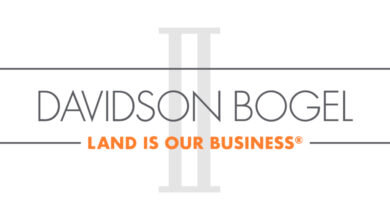Euler Hermes Report: Global Trade to Grow by +5.4% in 2022 Despite Supply-chain Disruptions

- Euler Hermes expects global supply-chain disruptions to remain high until H2 2022.
- When it comes to inputs from China, Europe is losing the tug-of-war against the US, but reshoring remains more talk than walk.
- Global trade volume to grow by +5.4% in 2022 and +4.0% in 2023.
PARIS–(BUSINESS WIRE)–Global supply-chain disruptions could remain high until H2 2022 amid renewed Covid-19 outbreaks around the world, China’s sustained zero-Covid policy and demand and logistic volatility during Chinese New Year, according to Euler Hermes’ Global Trade Report. Nevertheless, the trade credit insurer expects trade growth to remain strong through 2022 and 2023, with some clear winners across regions and sectors.
Global supply-chain disruptions will remain high until H2 2022
After exceptionally strong performance since H2 2020, global trade of goods contracted in Q3, especially in advanced and emerging economies. However, advanced economies are suffering more from supply-chain bottlenecks rather than trouble with demand: Euler Hermes finds that production shortfalls are behind 75% of the current contraction in global volume of trade, with the rest explained by transport delays. Looking ahead, rapidly growing orders for new transportation capacity (6.4% of the existing fleet) should turn operational towards the end of 2022, while increased spending on port infrastructure in the US should significantly ease global shipping bottlenecks.
When it comes to inputs from China, Europe is losing the tug-of-war against the US
Europe is more at risk compared to the US when it comes to the heavy reliance on intermediate inputs from abroad. Without production capacity increases and investments in port infrastructure, the normalization of supply bottlenecks in Europe could be delayed beyond 2022 if demand remains above potential. Euler Hermes finds that the household equipment, consumer electronics, automotive and machinery and equipment sectors are most vulnerable to input shortages.
“China is a key downside risk for Europe: we estimate that a 10% drop in EU imports from China could be a drag of more than -6% on the metal sector, more than -3% on the automotive sector (incl. transport equipment) and more than -1% on computer and electronics,” says Ano Kuhanathan, Senior Sector Advisor at Euler Hermes.
Yet, reshoring and nearshoring will remain more talk than walk
Despite the ongoing global supply-chain disruption, Euler Hermes finds no clear trend of reshoring or nearshoring of industrial activities so far. The only exception is the UK, which is likely to have faced disruptions due to Brexit. However, protectionism reached a record high in 2021 and should remain elevated, mainly in the form of non-tariff trade barriers (e.g. subsidies, industrial policies).
Overall, global trade will grow by +5.4% in 2022 and +4.0% in 2023
While there is a risk of a double-dip in Q1 2022, Euler Hermes expects a normalization of international trade flows in volume from H2 2022, driven by three factors:
- A cooling down of consumer spending on durable goods, given their longer replacement cycle and the shift towards more sustainable consumption behaviors.
- Less acute input shortages as inventories have returned to or even exceeded pre-crisis levels in most sectors, and capex has increased (mainly in the US).
- Reduced shipping congestions (global orders for new container ships have reached record highs over the past few months, amounting to 6.4% of the existing fleet) and the planned USD17bn spending on port infrastructure in the US.
“Overall, we expect global trade in volume to grow by +5.4% in 2022 and +4.0% in 2023, and then gradually return to its pre-crisis average levels. However, this comes at the expense increased global imbalances. The US will register record-high trade deficits (around USD1.3trn in 2022-2023), mirrored by a record-high trade surplus in China (USD760bn on average). Meanwhile the Eurozone will also see higher-than-average surplus of around USD330bn,” explains Françoise Huang, Senior Economist for Asia-Pacific at Euler Hermes.
And the winners are…
Euler Hermes estimates that the energy, electronics and machinery and equipment sectors should continue to outperform in 2022. But the main export winner globally in 2023 should be automotive, thanks to the backlog of work and lower capex in 2021. At the regional level, Asia-Pacific should continue to be the main export winner in the coming few years (over USD3trn in export gains in 2021-2023).
Social media
Follow us on Twitter @eulerhermesNA
Follow us on LinkedIn Euler Hermes North America
Follow us on YouTube eulerhermes
About Euler Hermes
Euler Hermes is the global leader in trade credit insurance and a recognized specialist in the areas of surety, collections, structured trade credit and political risk. Headquartered in Paris, Euler Hermes is present in more than 50 countries with 5,800 employees. In 2020, Euler Hermes global business transactions represented 824 billion Euro in exposure. Euler Hermes is a full member of Allianz Group.
For more information, please visit www.eulerhermes.com
Cautionary note regarding forward-looking statements: The statements contained herein may include prospects, statements of future expectations and other forward-looking statements that are based on management’s current views and assumptions and involve known and unknown risks and uncertainties. Actual results, performance or events may differ materially from those expressed or implied in such forward-looking statements. Such deviations may arise due to, without limitation, (i) changes of the general economic conditions and competitive situation, particularly in the Allianz Group’s core business and core markets, (ii) performance of financial markets (particularly market volatility, liquidity and credit events), (iii) frequency and severity of insured loss events, including from natural catastrophes, and the development of loss expenses, (iv) mortality and morbidity levels and trends, (v) persistency levels, (vi) particularly in the banking business, the extent of credit defaults, (vii) interest rate levels, (viii) currency exchange rates including the euro/US-dollar exchange rate, (ix) changes in laws and regulations, including tax regulations, (x) the impact of acquisitions, including related integration issues, and reorganization measures, and (xi) general competitive factors, in each case on a local, regional, national and/or global basis. Many of these factors may be more likely to occur, or more pronounced, as a result of terrorist activities and their consequences.
Contacts
EULER HERMES NORTH AMERICA
Casey Pelfrey
(571) 213-4721
[email protected]



